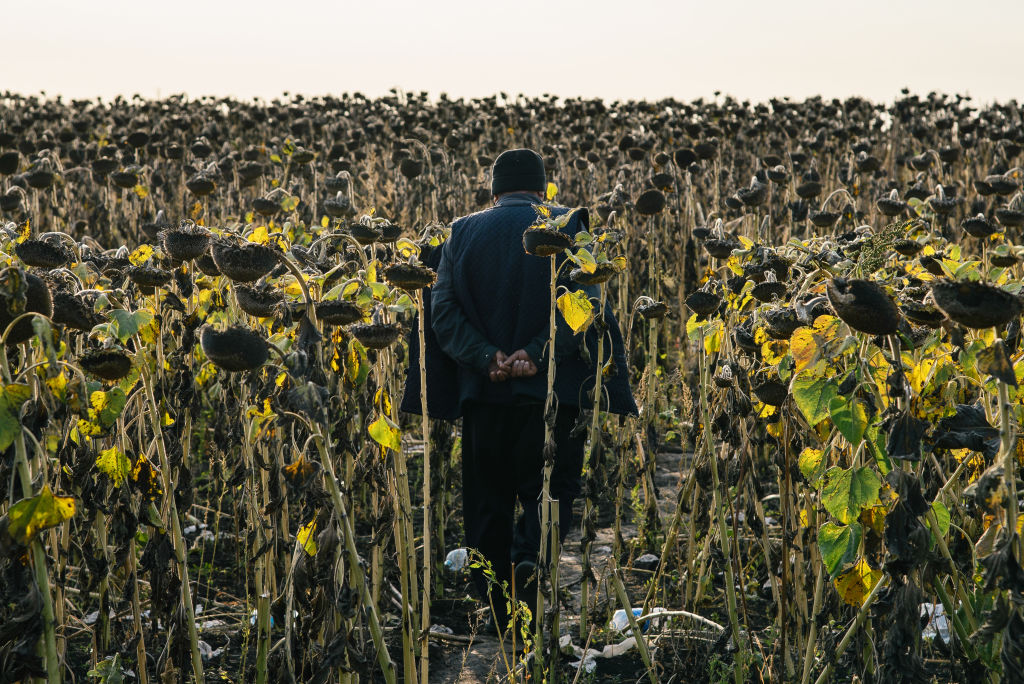
In a world of economic interdependence, sanctioning Russia will likely prove more globally destabilizing than policymakers realize. To be effective, the West needs to look to vulnerable Russia-dependent economies, like those of Central Asia, in order to mitigate collateral damage.
Landlocked Central Asia is flanked on all sides by countries sanctioned by the West—Afghanistan, Iran, Russia and, to a lesser extent, China. Now the region is struggling to cope with the new economic onslaught on Moscow. Energy-rich Kazakhstan, which exports two-thirds of its oil supplies through Russian ports, is reeling from the international sanctions regime and burning through vital currency reserves to prop up its faltering national currency, the tenge. These challenges come at a sensitive time for Kazakhstan, which has been working to re-establish investor confidence following violent unrest in January 2022 that left 225 people dead.
Further south, in the republics of Tajikistan, Kyrgyzstan, and Uzbekistan, governments are bracing for high unemployment and budgetary shortfalls. Seasonal migration provides a vital lifeline to these countries, which sent 7.8 million workers to Russia last year, reducing unemployment and easing strain on public services while allowing families to purchase basic necessities.
Read More: Even If Russia Wins, It Won’t Do So Easily
But addiction to the short-term fix of migration has also left them vulnerable to external shocks. Remittances currently account for 30% of Tajikistan’s GDP, 28% of the Kyrgyz Republic’s, and some 12% of GDP for less exposed Uzbekistan, the most populous country in the region. As the ruble falls to just 155 against the dollar (a record low), these three states will face the dual pressures of collapsing state and household budgets, leaving millions suffering from food insecurity.
Granted, this is not the region’s first rodeo. Remittances to the region plummeted by 40% in 2014, following Russia’s annexation of Crimea and the sanctions it triggered. COVID-19 was another lesson in the dangers of interdependence, with Russian border closures resulting in a 22% decline in overall remittances. Impoverished Tajikistan was hit particularly hard, with migrants sending just $1.7 billion back home—a $835 million decrease on the year prior. But the current sanctions package is unlike anything we have ever seen before, and the long-term consequences will be immense.

Russia’s crisis is China’s opportunity
Only last August, Central Asia was struggling to cope with the U.S. withdrawal from Afghanistan, the return of the extremist Taliban movement to power, and an Afghan refugee crisis (which may yet grow as food insecurity there hits 95% of households). Now, a Russian collapse will prove even more destabilizing, raising the specter of instability in Xinjiang, the Chinese province that borders the region.
For China, Tajikistan’s vulnerable 1,357-kilometer border with Afghanistan has been a recurring source of concern. In 2019, the New York Times leaked the “Xinjiang Papers,” revealing secret speeches made by President Xi Jinping during a 2014 visit to Xinjiang in the wake of a series of violent attacks across China. “After the United States pulls out of Afghanistan,” he warned, “terrorist organizations positioned on the frontiers of Afghanistan and Pakistan may quickly infiltrate into Central Asia.”
Tajikistan has become an unlikely buffer preventing instability from Afghanistan spilling over into Xinjiang, where China has detained an estimated 1.8 million Turkic minorities in campaign widely referred to as cultural genocide. The two countries conducted their first bilateral exercises in 2016, involving some 10,000 troops, and China has provided material support to the Central Asian country’s border defense. More noteworthy, Beijing has built and taken over the administration of a number of military bases along the volatile Tajik-Afghan border.
Russian strategic capacity in the region should not be underestimated. In January this year, Kazakhstan’s President Kassym-Jomart Tokayev called on Russian forces, not Chinese, to help reestablish control in the wake of violent protests wracking his country. Moscow also provided vital support to Tajik and Afghan forces stationed on the Afghan border in August 2021, following the U.S. withdrawal.
Read More: How Russia’s Invasion of Ukraine Could Change the Global Order Forever
But the long-term arc points to Chinese hegemony. In the economic sphere, China has already displaced Russia. Russia–Central Asia trade currently stands at around $18.6 billion, two thirds of China’s, and a far cry from the 1990s when it accounted for 80% of the region’s trade ($110 billion). Meanwhile, China is rapidly emerging as a major arms provider and strategic partner in the region, albeit still far from eclipsing Moscow.
Rapid economic decline will accelerate these trends. While Russia’s economy suffers under the weight of sanctions, China’s trade with Central Asia has already bounced back to pre-pandemic levels, up nearly 18% in Kyrgyzstan from $6.37 billion in 2019 to $7.5 billion in 2021. The outlook remains similar for the rest of the region.
These gains will not compensate Central Asia for the sudden exit of Russia from the regional market, however. Indeed, the sudden shock to its fragile political and economic balance could result in a more assertive and domineering China, seizing advantage of the widening power asymmetry between itself and its neighbors. Beijing already holds over 40% of Tajikistan and Kyrgyzstan’s national debts. Economic decline may result in more security concessions to China in exchange for debt alleviation.
The economic catastrophe of the Ukraine war will reverberate far beyond Russia’s borders for decades to come. While the sanctions may be a just response to Putin’s aggression in Europe, they are without precedent and could result in violent instability in neighboring countries. The international community needs to work to mitigate collateral damage before it is too late.
More Must-Reads from TIME
- Cybersecurity Experts Are Sounding the Alarm on DOGE
- Meet the 2025 Women of the Year
- The Harsh Truth About Disability Inclusion
- Why Do More Young Adults Have Cancer?
- Colman Domingo Leads With Radical Love
- How to Get Better at Doing Things Alone
- Michelle Zauner Stares Down the Darkness
Contact us at letters@time.com